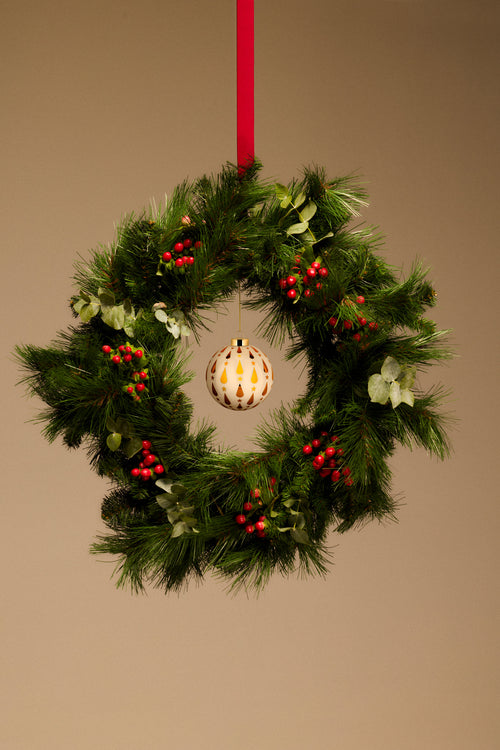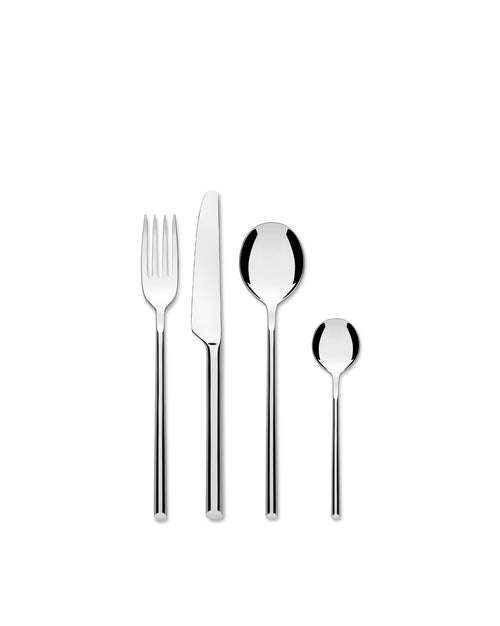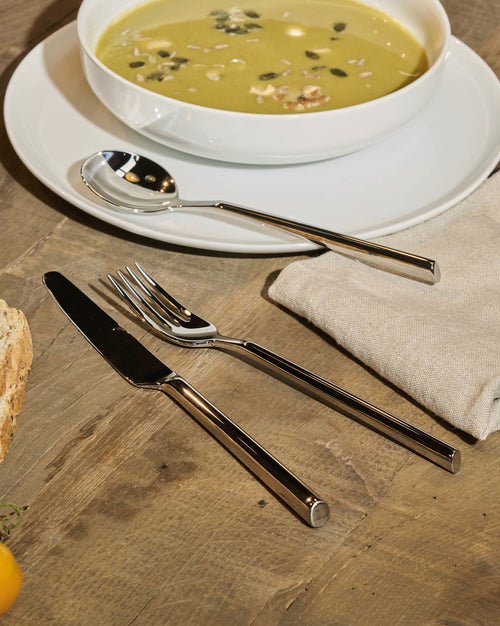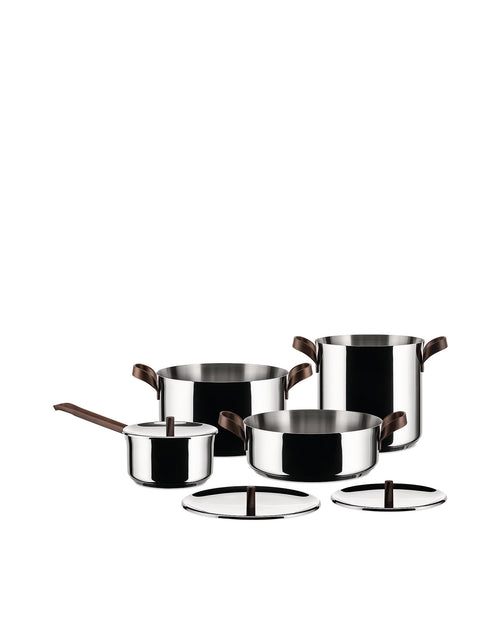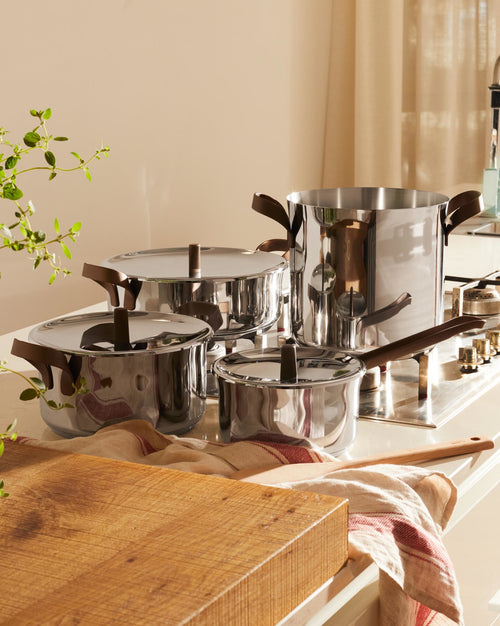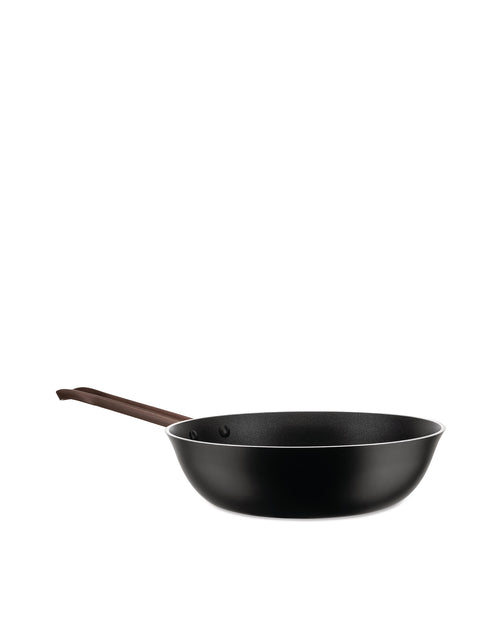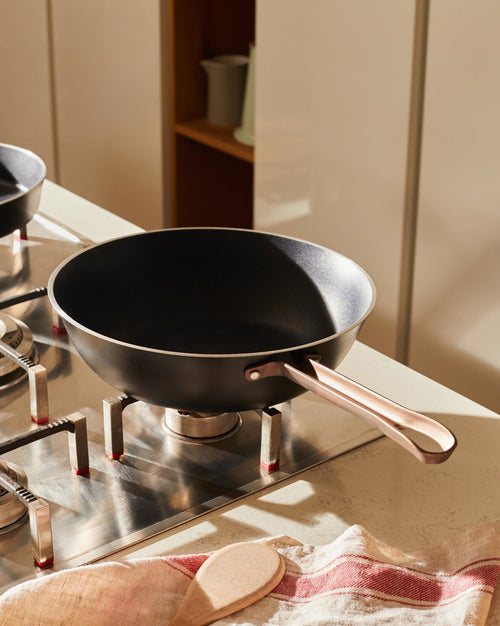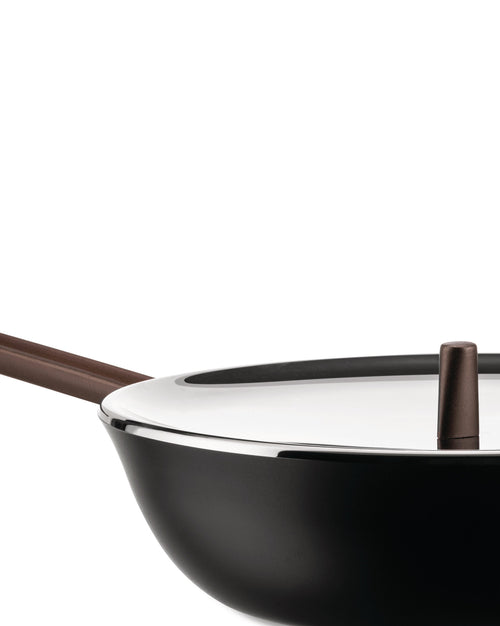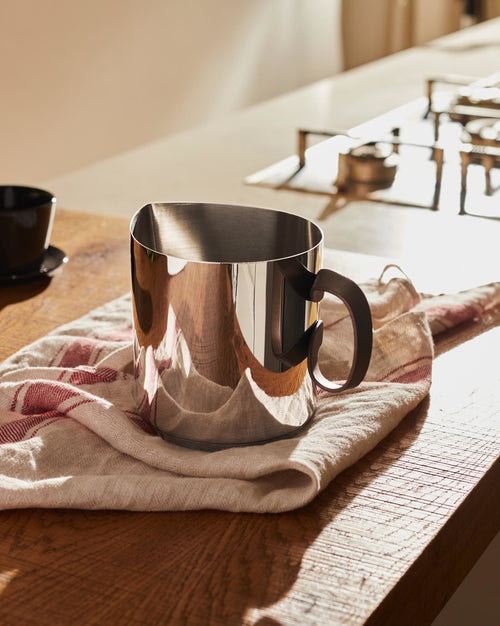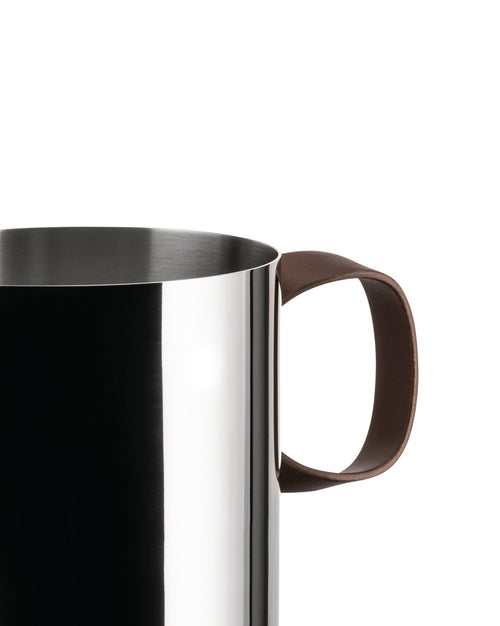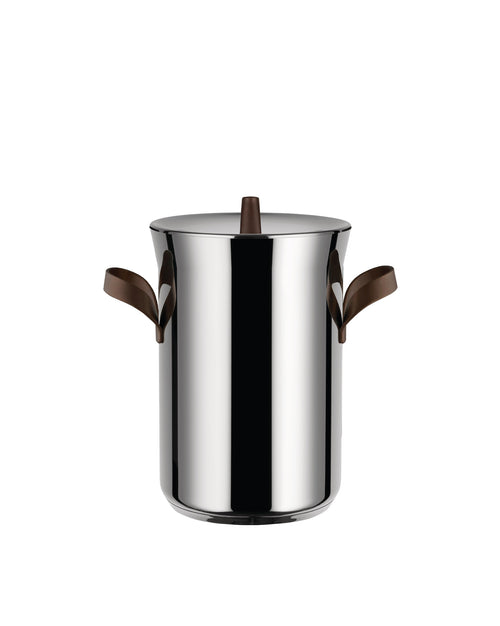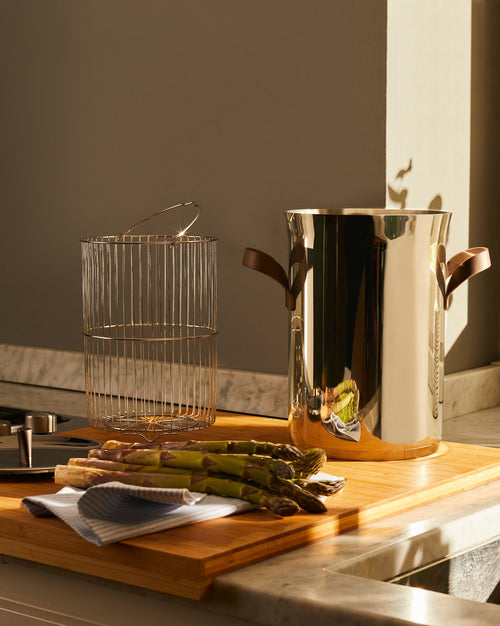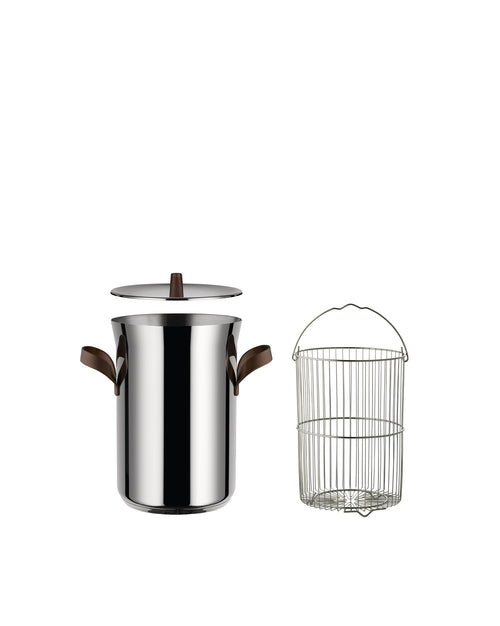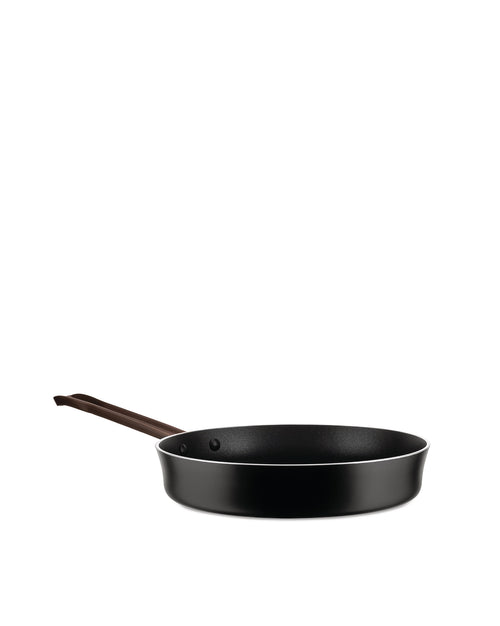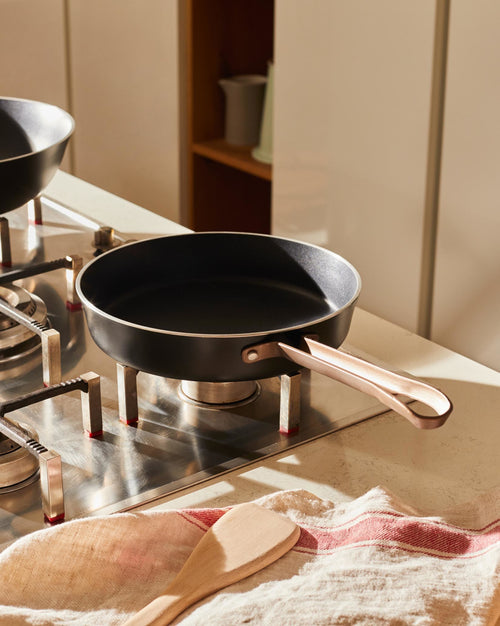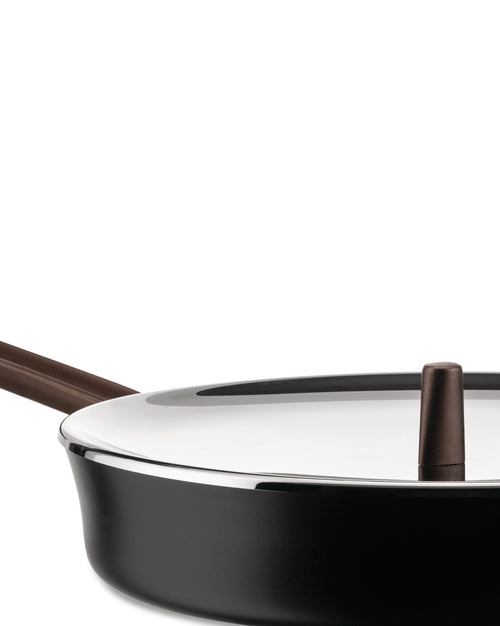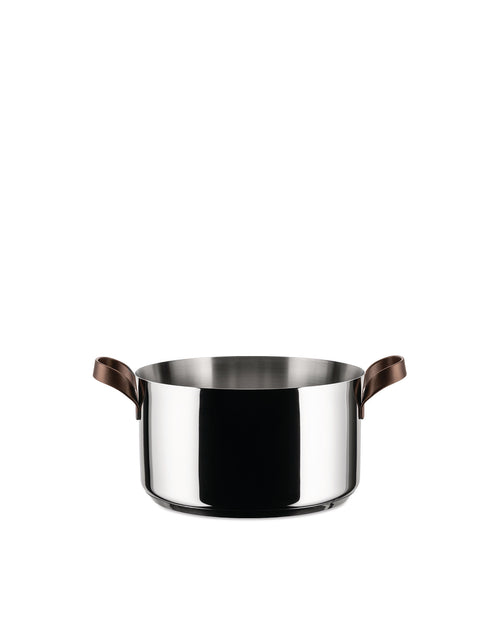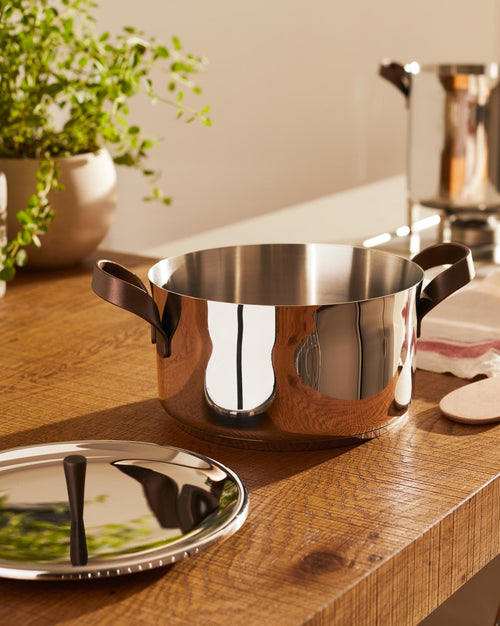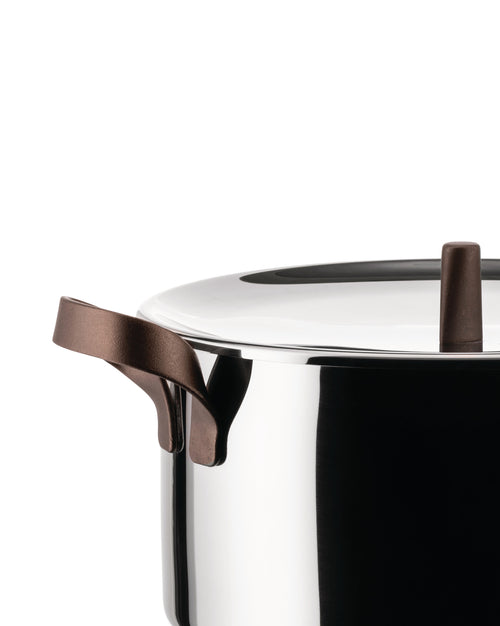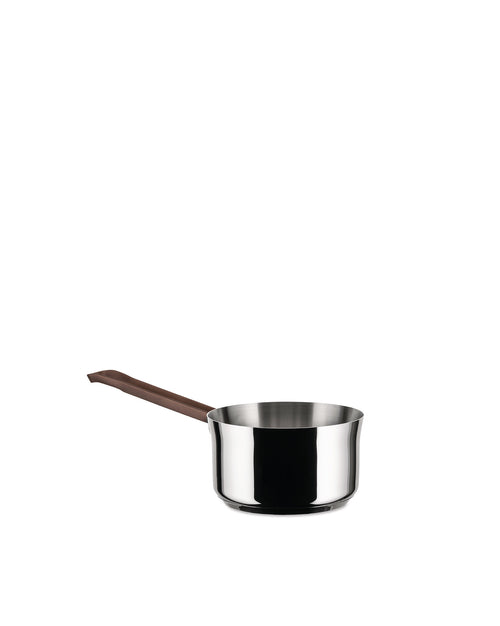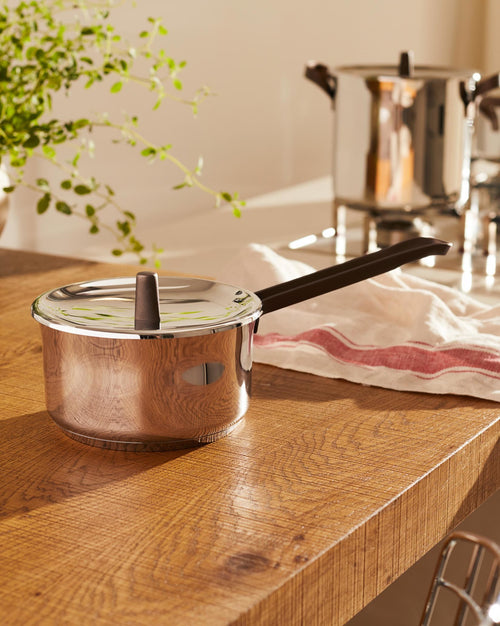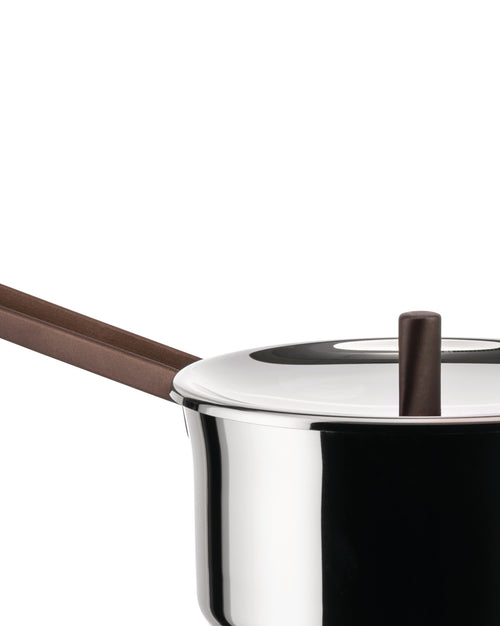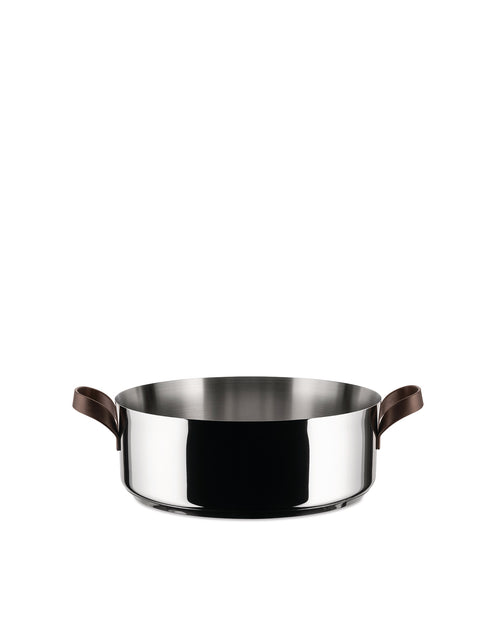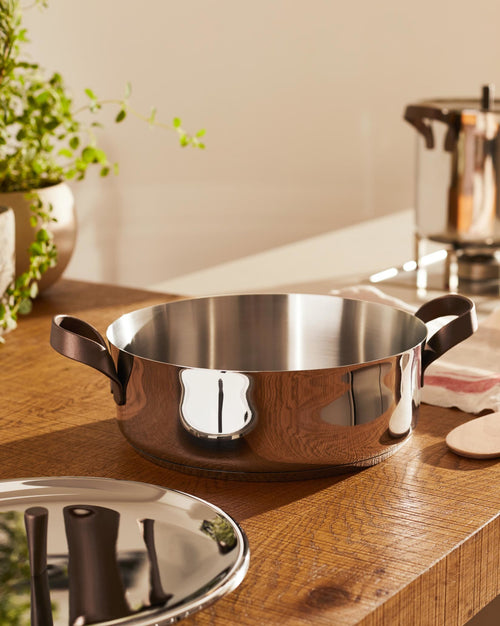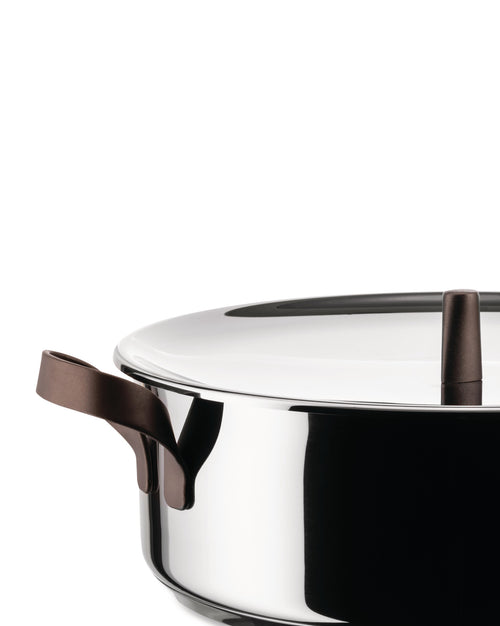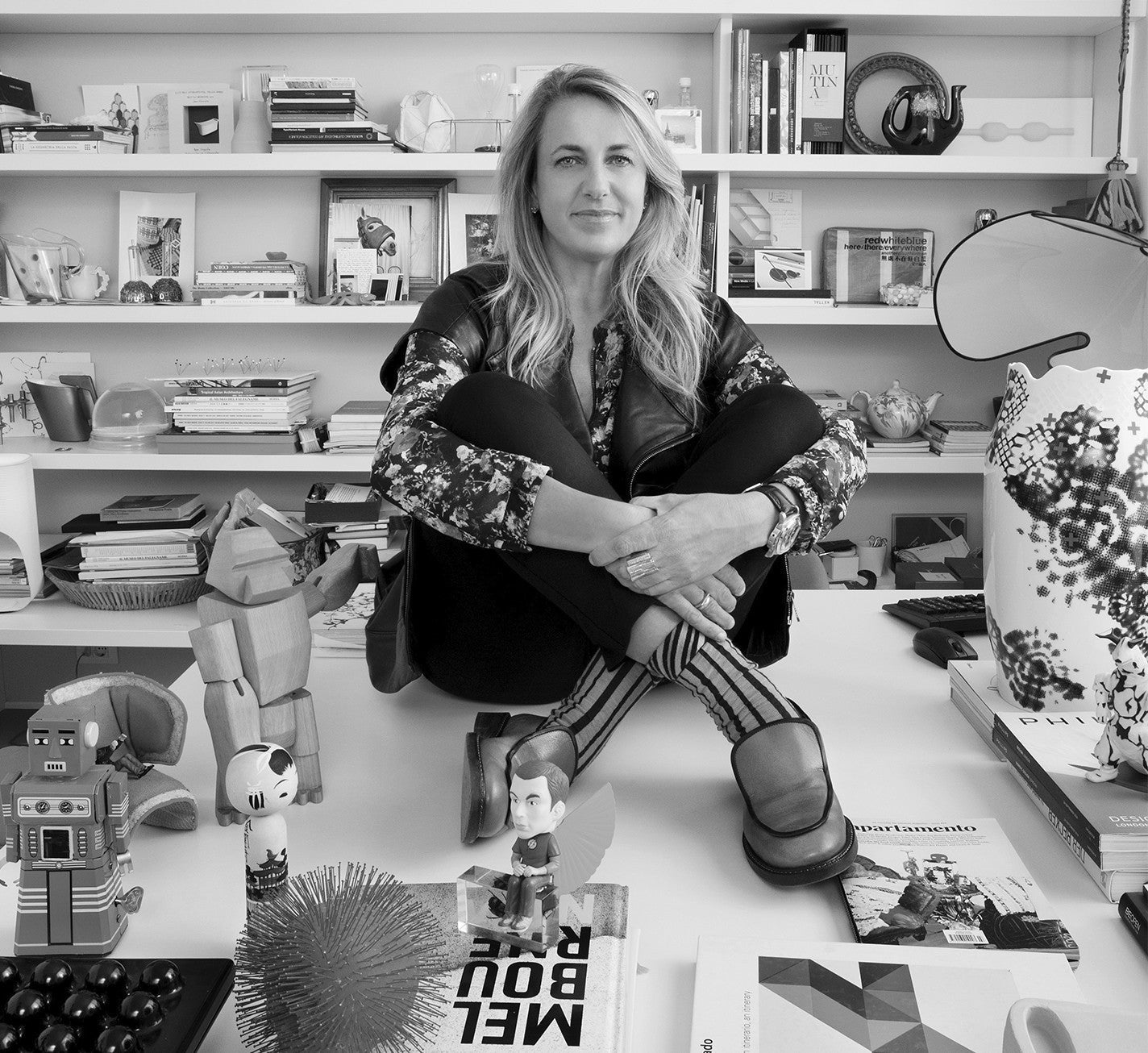
To mark the launch of the new Clivo cutlery collection, we asked Patricia Urquiola a few questions about her connection to Japan, the importance of sustainability in her projects and the central role of materials in her design practice. A dialog that takes us through the creative process of one of today's most influential designers.
In 2018, you presented the Edo pots, the old name for Tokyo, and this year the Clivo cutlery, which is inspired by Japanese bamboo cutlery. Where does your connection to Japan come from, what attracts you to this culture?
Japan has an essential, precise way of designing. This is how Clivo came into being - from a concept of form created by subtraction, from a calibrated gesture, out of respect for the material. As with the small bamboo utensils, every detail is functional but also sensual. With the Alessi brand, which works steel with great sensitivity, this approach takes shape in a solid, precise and at the same time delicate object.
Sustainability has long been a common thread running through your projects: All objects designed for Alessi are made of steel. Was the choice of this material also made for reasons of environmental awareness?
When you work with the Alessi brand, you naturally think of steel: a material that is part of their history and way of designing and which they have mastered with a very special expertise. For me, this is always an opportunity to take a fresh look at it and find a new language. Steel is also an extremely durable material that guarantees a long product life.
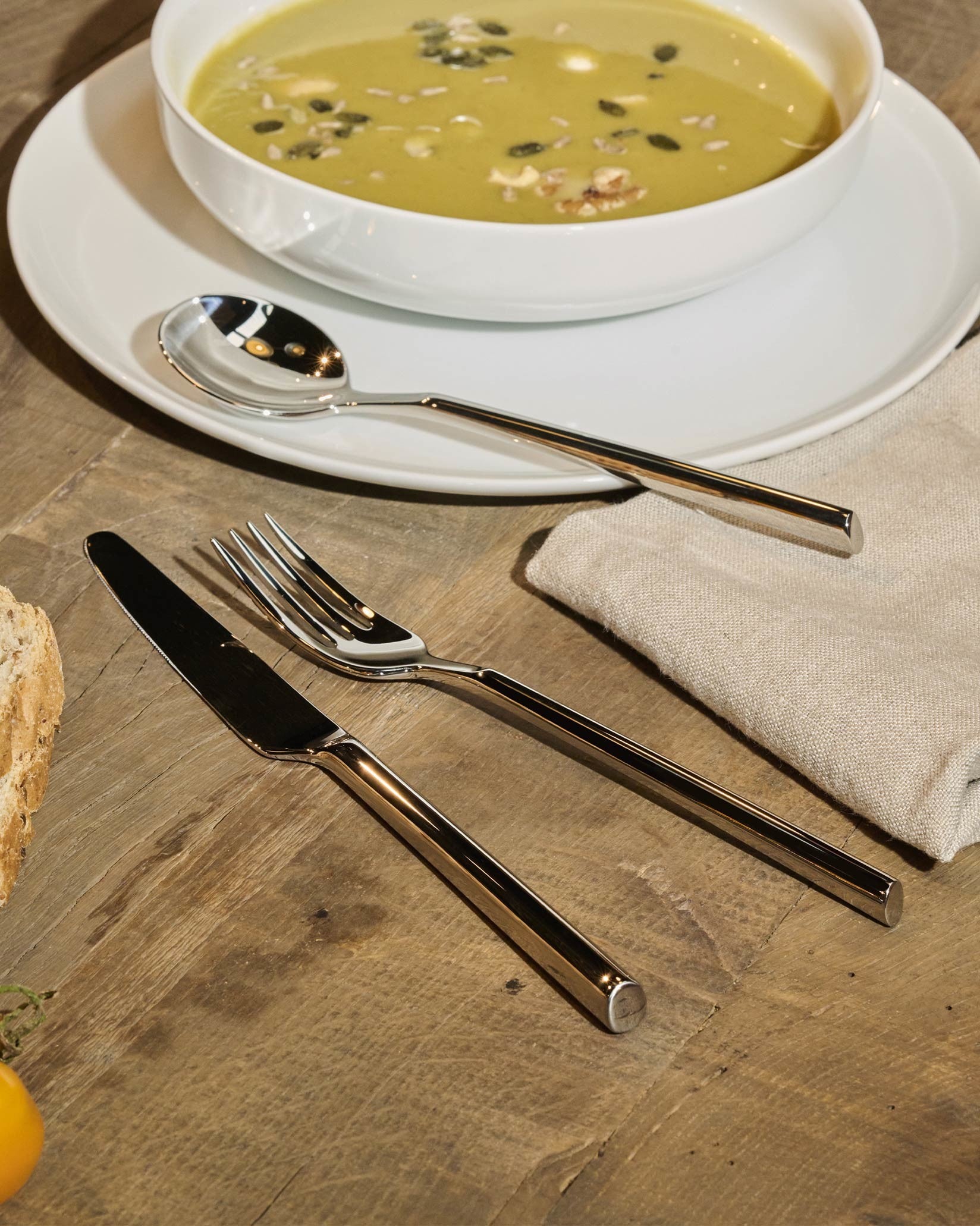
One more question about steel: Can a project be created based on the usability of the material? Or does the material only come into play later?
Sometimes it is the material that dictates the form, at other times it is the relationship between idea and boundary that produces the most interesting solution. Projects often arise from a combination of factors such as material, form or production process, without one factor being the driving force.
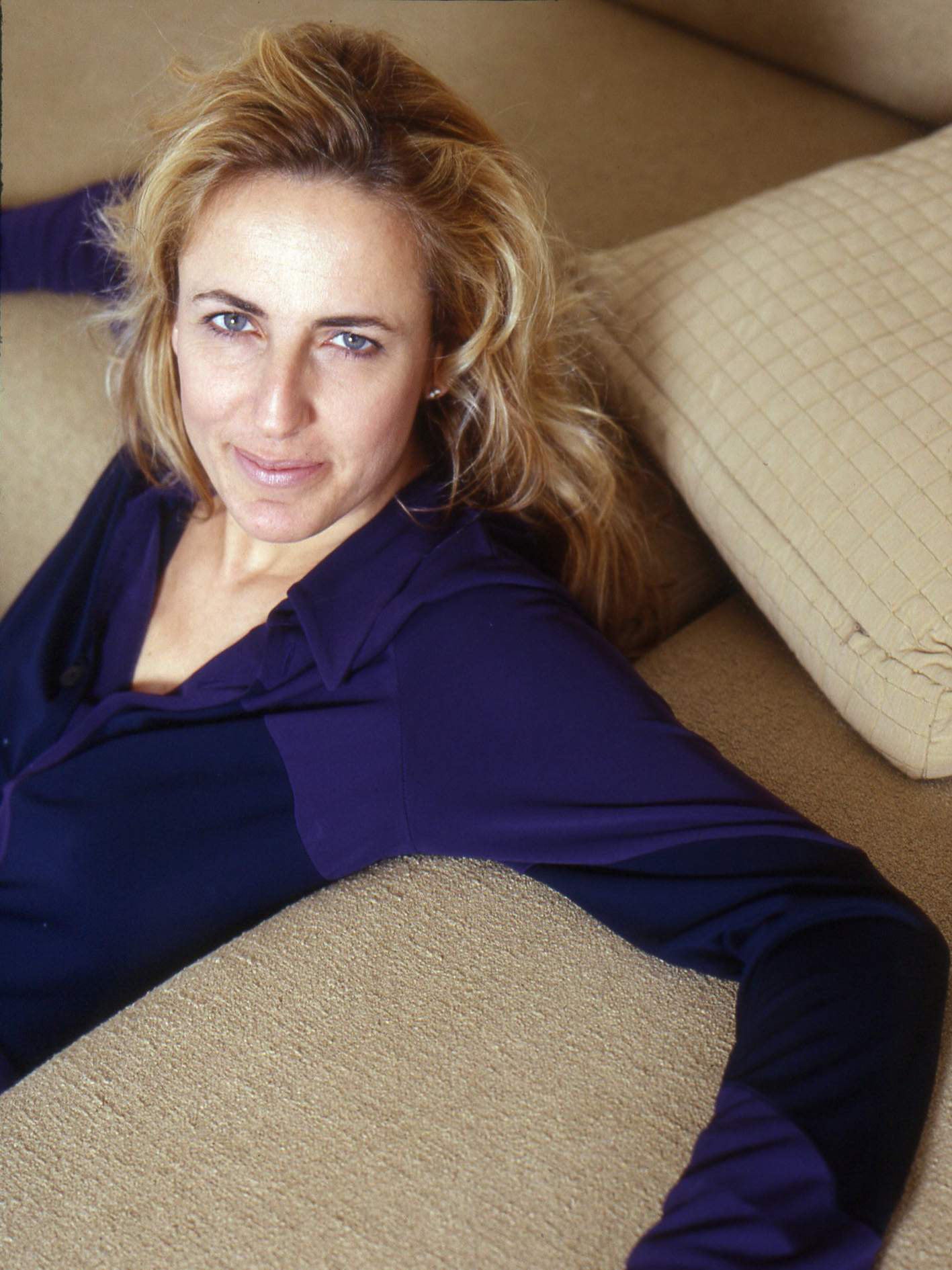
Edo is the old name for Tokyo, but also the Latin verb for "to eat". The name Clivo is reminiscent of the act of carving, the transformation of a plant fiber into an instrument. How do you come up with the names for the objects you design?
The names are part of the project. Sometimes they come to me immediately, like an intuition, sometimes only at the end, when the object has found its voice. They have to tell a story, create a resonance. "Edo" plays on ambiguity: Time and gesture, orientation and function. "Clivo", on the other hand, begins with an action, a minimal movement – the small cut that transforms a plant fiber into a utensil.
